Locusts, also called “grasshoppers,” belong to the Orthoptera order. This group includes species from the Acrididae and Pyrgomorphidae families. Over 10,000 locust species exist globally, mainly in the grasslands and deserts of tropical and temperate zones. In Africa, the desert locust primarily causes large-scale plagues.
Globally, the desert locust (Schistocerca gregaria) ranks as the most destructive migratory pest. Their diet mainly features crops and vegetation. A swarm covering one square kilometer can house up to 80 million adult locusts. In one day, they can consume an amount of food equivalent to what 35,000 people would eat.
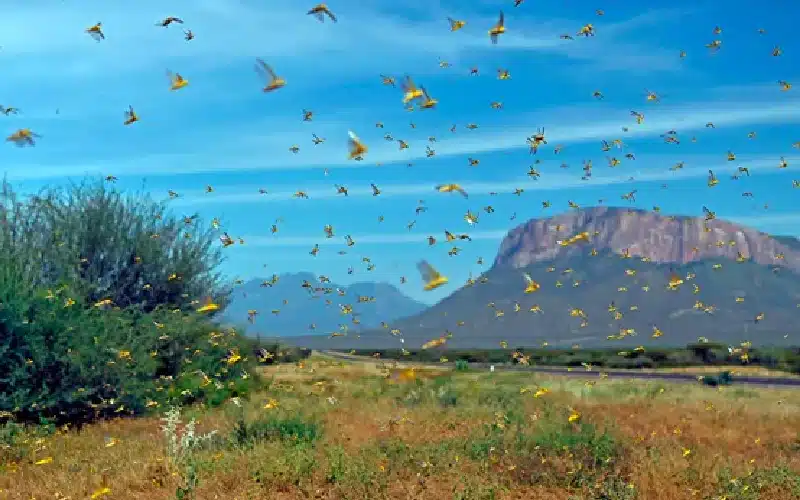
On January 22, 2020, locusts surged from the ground vegetation in northern Kenya. (Photo credit: Tony Karumba/AFP/Getty)
This article addresses the causes of locust plagues and adheres to Integrated Pest Management (IPM) principles. It covers ten methods, including prevention, physical, biological, and chemical control, and guides on battling the desert locust in Africa.
Why are Desert Locusts often causing plagues?
There are three main reasons, all linked to their “efficient survival strategies.”
First, they reproduce at an impressive rate. Each female locust can lay about 80 eggs at once. They don’t just deposit these eggs in the soil; they secrete a white substance, build a secure underground “nest,” place the eggs inside, and seal it. This method boosts egg survival rates, allowing locust numbers to skyrocket. In three months, their population could increase twentyfold; in six months, 400 times; and in nine months, up to 8,000 times!
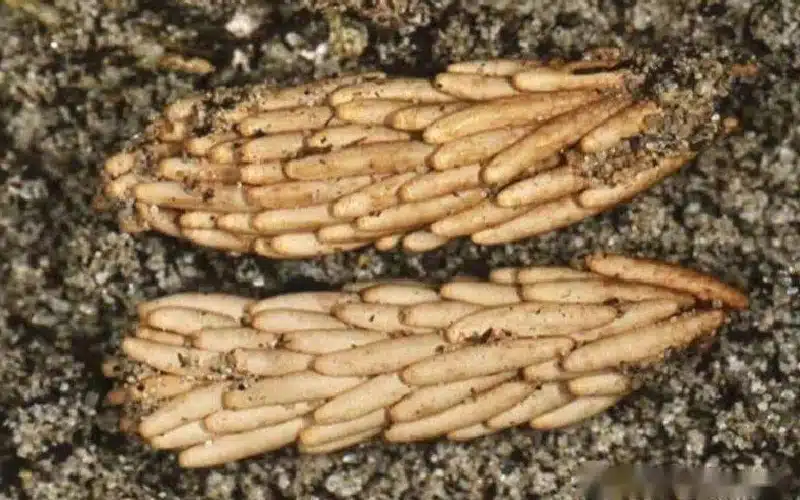
Desert locust egg pod
Second, locusts develop directly, without a larval stage. After hatching, they grow from nymphs to adults. This similarity means that freshly hatched nymphs adapt exceptionally well. Even at temperatures of 40 degrees Celsius, locusts can reproduce normally, perhaps even more quickly.
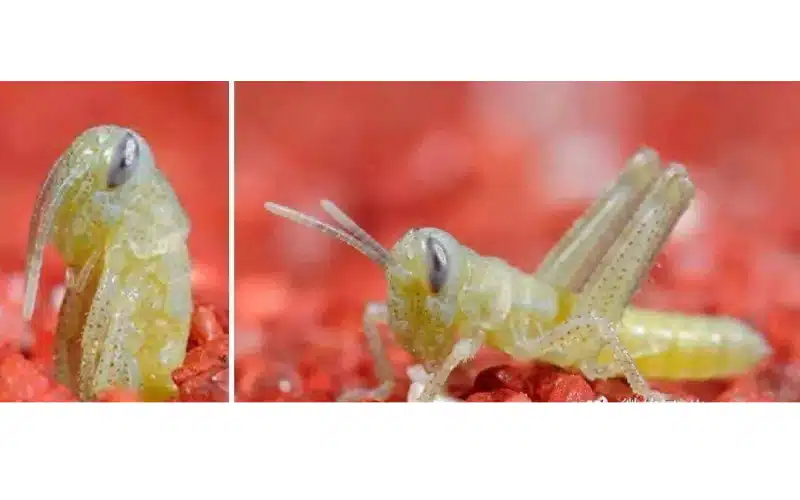
Desert locust hatching
Finally, locusts possess strong migratory skills. They jump high and fly long distances. For example, desert locusts can fly up to 150 kilometers daily against the wind. This ability allows them to quickly move to new areas and cause extensive damage.
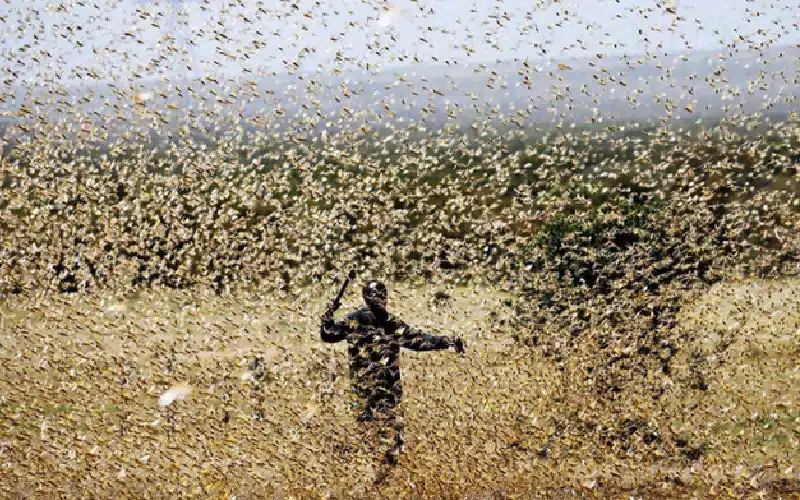
Flying desert locusts in Africa
How to Control Desert Locusts in Africa?
Desert locusts pose a major challenge, yet thanks to historical progress and technological advances, we now have increasingly effective methods to combat them. Effective control involves diverse strategies that reduce locust numbers and prevent large-scale outbreaks.
Below, we outline 9+ integrated control methods to assist you in stopping locusts from eating your plants, including crops and vegetables.
Locust Forecasting
Effective management is crucial and can pinpoint areas at risk before an outbreak occurs. With technology, scientists monitor soil moisture and vegetation via satellite imagery to predict potential locust outbreaks. High temperatures accelerate the hatching of eggs laid in moist, sandy soil. These technological measures allow for early action to thwart widespread locust invasions.
Physical Control Methods
Physical control methods are simple, effective, and low-cost. They work best against locusts in low densities. Here are four physical methods we recommend:
1. Using Insect Nets
Insect nets effectively block locusts and are eco-friendly, reducing the need for chemical pesticides. It’s important to choose nets based on your specific needs, including material, mesh size, and length. And you should ensure the nets allow proper airflow to prevent fungal diseases caused by poor ventilation.
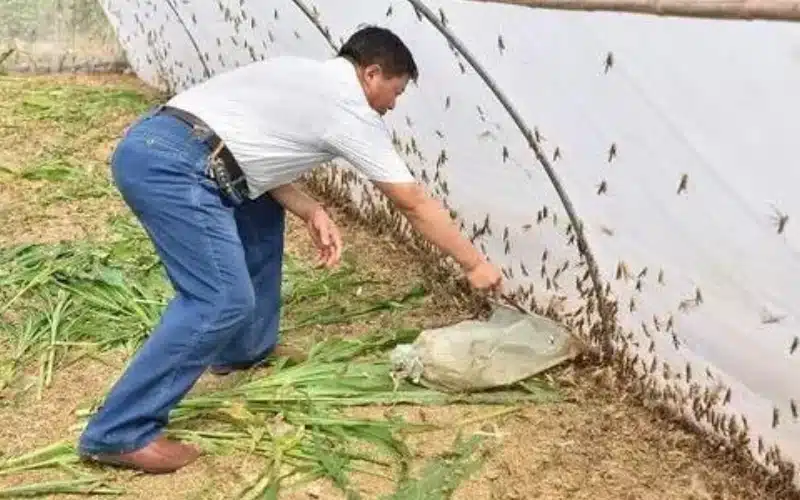
Insect nets can both raise locusts and prevent them from entering your farms.
2. Traditional Methods
Traditional methods such as digging trenches, trapping, and burning or killing locusts are common in Africa. Using nets to capture dense locust populations is also effective. However, these methods do not significantly reduce locust numbers.
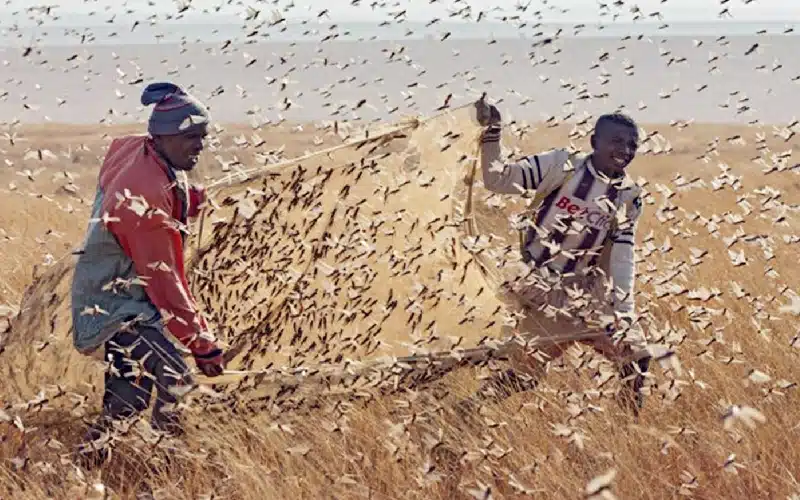
Catching desert locusts with DIY net
3. Noise Deterrence
Using noise to drive away locusts is a traditional method. Beating bushes with sticks in areas with low locust density can be effective. You can also try purchasing noise deterrent devices from stores to help repel locusts.

African women drive away locusts by banging a metal pan
4. Photoelectric Sensing
This method exploits locusts’ attraction to light. Setting up infrared light sources can trap locusts, which companies use to produce organic fertilizer. (These companies process locusts into a powder used in animal feed or as organic fertilizer, providing a dual solution to the locust problem and supplying nutrients for agriculture)
This not only protects crops but also offers a revenue stream from selling captured locusts to fertilizer companies.
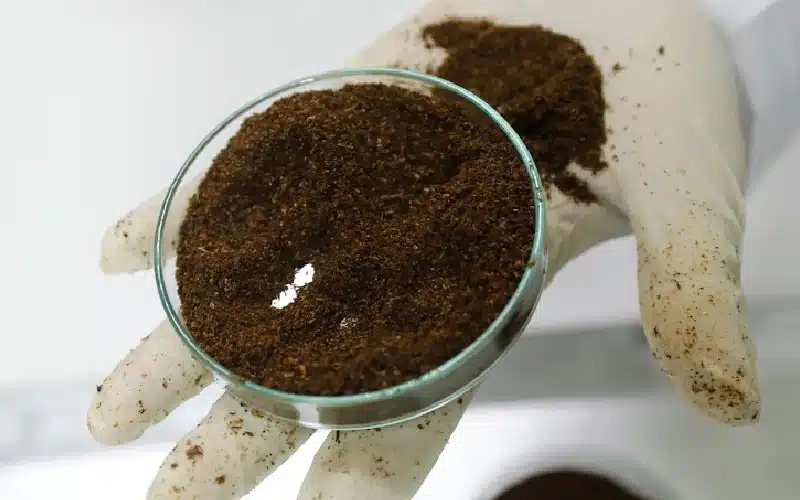
Ground locusts can make excellent organic fertilizer
Biological Control Methods
As science and technology evolve, we’re seeing a greater focus on ecological conservation and the need to reduce chemical pesticide use. Here are four biological control methods to help protect your farmlands from hungry locusts.
5. Natural Predators
Natural predators offer a sustainable and eco-friendly way to control pests. Birds such as sparrows and crows, along with snakes, frogs, and toads, naturally prey on Desert Locusts. Poultry like chickens and ducks can also help. During non-outbreak periods, consider allowing these birds to roam your fields to eat locusts, benefiting both your crops and the birds.
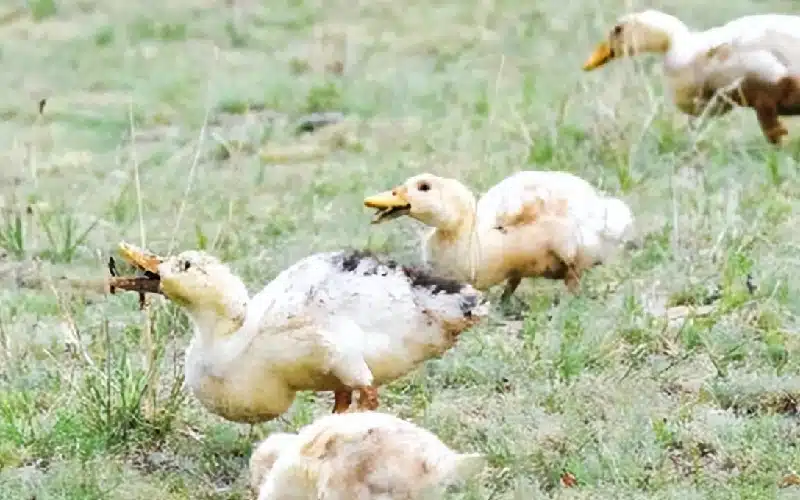
Ducks capturing locusts
6. Pathogenic Fungi
Spray biopesticides containing Metarhizium acridum, a natural fungus used for nearly 20 years in Australia and China and more recently in Africa. This approach targets locusts effectively while minimizing impact on other species. It works well against both juvenile and adult locusts, proving particularly effective in East Africa in 2021.
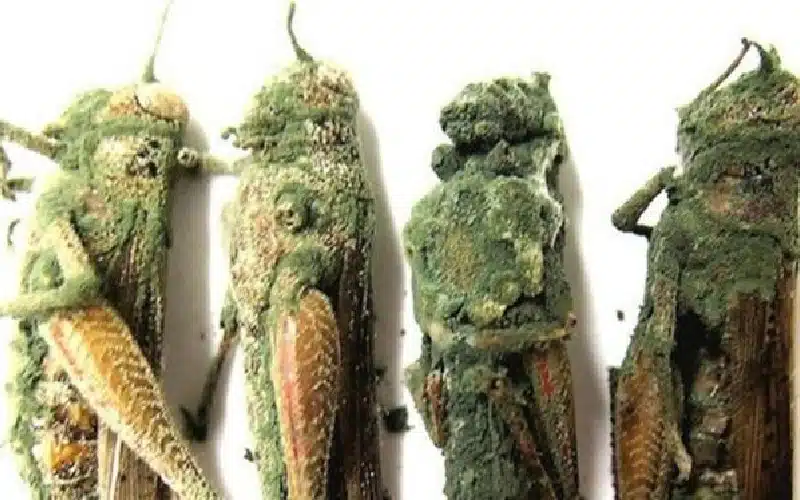
Locusts infected with Metarhizium acridum
7. Biopesticides
Neem, along with oils from the neem and castor trees, can inhibit Desert Locust growth, reproduction, and egg hatching. Additionally, substances like nicotine from tobacco, pyrethrins from chrysanthemums, and rotenone from legume roots are effective against locusts.
8. Insect Growth Regulators
These are targeted insecticides that disrupt locust growth and reproduction, posing minimal risk to other species. Effective at various growth stages, these regulators are environmentally friendly alternatives to traditional pesticides.
In 2021, this method saw widespread use in East Africa, significantly reducing locust populations by more than 95% within 10 days of application.
Chemical Control Methods
Chemical control uses pesticides to eliminate locusts quickly and easily. While effective for managing Desert Locusts, it requires careful use due to potential harm to non-target organisms and food safety risks from residue.
To mitigate the adverse effects of chemical pesticides, band application is advisable. Spreading pesticides every 300 to 500 meters in locust-prone areas can control their numbers effectively and reduce pesticide usage. Depending on control needs, insecticides may be used alone or mixed according to standard mixing guidelines to decrease locust population density rapidly.
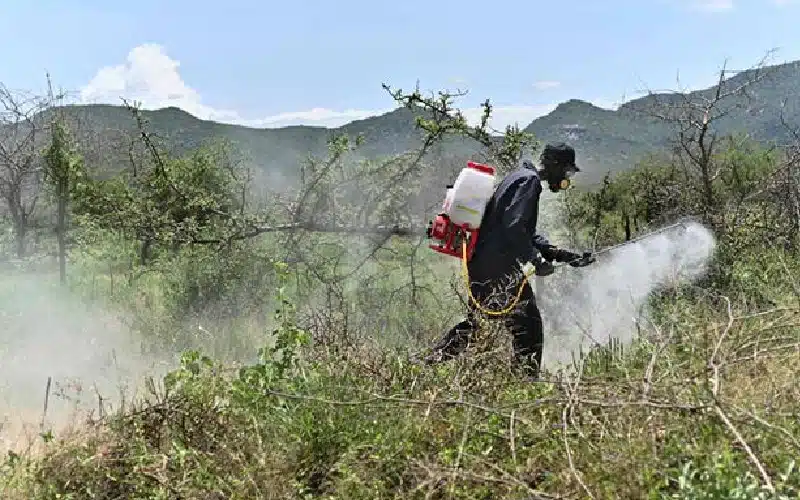
Volunteers spraying insecticide
Spraying equipment includes backpack sprayers, large ground units, and aircraft. Local governments typically use planes or drones for pesticide application during locust outbreaks. The optimal times for spraying are early morning or evening when temperatures are cooler, locust activity is lower, and spray effectiveness increases with minimal impact on other wildlife.
Conclusion
Desert locusts devastate crops due to their high reproductive and migratory capabilities. For minor infestations, individual and localized measures can be effective. However, large-scale outbreaks necessitate coordinated, comprehensive strategies by national and international bodies. Effective control depends on collaborative efforts to curb locust spread and reproduction.
Integrated management is crucial in controlling locusts, safeguarding the environment, reducing costs, and minimizing other species’ impact, thus ensuring food safety. Protecting agriculture and maintaining ecosystem balance is vital, so collective action is essential for a safer, sustainable future.